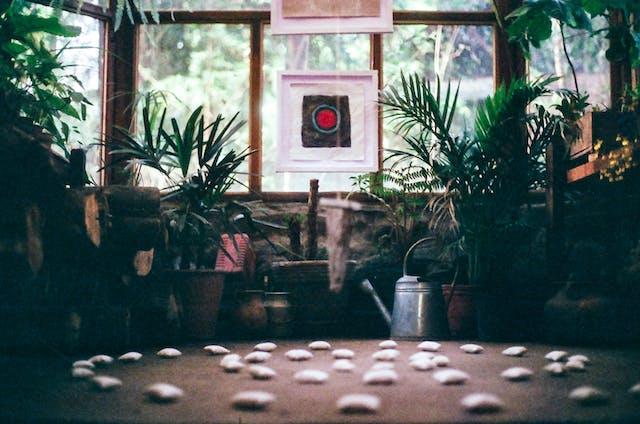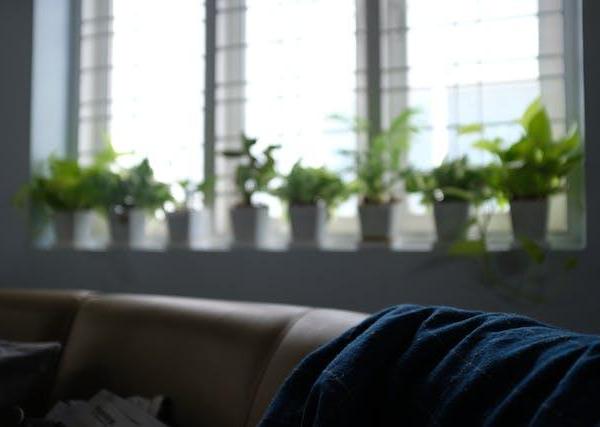Choose the Right Plants:
When gardening in limited spaces or low-light conditions, it is essential to select plants that are well-suited for these environments. Consider the following factors when choosing indoor plants:Opt for plants that thrive in low-light conditions, such as:
- Snake Plant (Sansevieria): Known for its ability to tolerate low-light environments and purify the air.
- ZZ Plant (Zamioculcas zamiifolia): Requires minimal light and is highly resilient.
- Pothos (Epipremnum aureum): Thrives in low-light areas and is easy to care for.
- Peace Lily (Spathiphyllum): Adapts well to low-light conditions and produces beautiful flowers.
- Cast Iron Plant (Aspidistra elatior): Extremely tolerant of low-light environments and neglect. b) Compact and Space-Saving Plants:
Choose plants that are suitable for small spaces and have a compact growth habit, such as:
- Dwarf varieties of popular plants, like the Miniature Rose (Rosa spp.) or Dwarf Calathea (Calathea spp.).
- Air Plants (Tillandsia spp.): These plants do not require soil and can be mounted on walls or placed in hanging terrariums.
- Herbs with a compact growth habit, such as Chives (Allium schoenoprasum) or Dwarf Basil (Ocimum basilicum).
Optimize Space with Vertical Gardening:
Limited horizontal space can be overcome by utilizing vertical gardening techniques. The following strategies can help you make the most of your available space:Install wall-mounted planters or hanging baskets to grow plants vertically. This not only saves space but also adds a decorative element to your walls. Choose plants that cascade or have trailing growth habits, like String of Pearls (Senecio rowleyanus) or Spider Plant (Chlorophytum comosum).
b) Vertical Garden Systems:
Consider using vertical garden systems, such as living walls or modular planters, which allow you to grow a variety of plants in a limited space. These systems often utilize hydroponic or aeroponic techniques, reducing the need for soil and maximizing space efficiency.
c) Shelving and Tiered Plant Stands:
Utilize shelving units or tiered plant stands to create multiple levels for your plants. This provides more surface area for growing and allows plants to receive adequate light. Position plants according to their light requirements, with those needing more light placed higher up.
d) Hanging Plants:
Hang plants from the ceiling or install hooks to suspend them at different levels. This not only saves space but also adds visual interest to your indoor garden. Choose plants with cascading or trailing growth habits, such as English Ivy (Hedera helix) or String of Hearts (Ceropegia woodii).
Supplement Natural Light with Artificial Lighting:
In low-light conditions, supplementing natural light with artificial lighting becomes crucial for plant growth. Here are some tips for successful lighting:a) LED Grow Lights:
Invest in LED grow lights, which are energy-efficient and provide the optimal light spectrum for plant growth. Position the lights close to the plants, ensuring they receive the necessary light intensity.
b) Light Duration:
Most plants require 12-16 hours of light per day. Use timers to maintain a consistent light schedule and avoid overexposure or underexposure to light.
c) Light Placement:
As plants grow, adjust the height and position of the lights to prevent them from getting too close or too far away. Keep an optimal distance based on the specific light requirements of your plants.
d) Reflective Surfaces:
Maximize the effectiveness of artificial lighting by incorporating reflective surfaces near your plants. This can include using mirrors, light-colored walls, or aluminum foil to bounce light back onto the plants.
Proper Watering and Humidity Control:
Maintaining appropriate watering practices and humidity levels are essential for the health of indoor plants:a) Watering:
Ensure proper drainage by using pots with drainage holes to prevent waterlogged soil. Check the moisture level of the soil regularly and water only when it feels dry to the touch. Avoid overwatering, as it can lead to root rot and other issues.
b) Humidity Control:
Increase humidity levels by misting the leaves of plants regularly or placing a tray of water nearthe plants. Grouping plants together can also create a microclimate with higher humidity levels. You can also invest in a humidifier to maintain a consistent humidity level in the room.
c) Self-Watering Systems:
Consider using self-watering systems or planters with built-in reservoirs. These systems allow plants to absorb water as needed, reducing the risk of over or underwatering. They are particularly beneficial for busy individuals or those who may forget to water their plants regularly.
Adequate Air Circulation:
Proper air circulation is crucial for indoor plants, especially in limited spaces. Stagnant air can lead to fungal diseases and hinder plant growth. Here are some tips for ensuring adequate air circulation:a) Use Fans:
Place a fan near your indoor garden to promote air movement. This helps prevent the buildup of stagnant air and reduces the risk of pest infestations.
b) Open Windows or Doors:
If possible, open windows or doors periodically to allow fresh air to circulate in the room. This can help remove stagnant air and provide plants with a fresh supply of carbon dioxide.
c) Avoid Overcrowding:
Be mindful of overcrowding your plants. Leave enough space between them to allow air to flow freely. This not only promotes air circulation but also reduces the risk of diseases spreading between plants.
Regular Maintenance and Monitoring:
To ensure the success of your indoor garden, it is important to stay vigilant and provide regular care and maintenance. Here are some key tasks to keep in mind:a) Pruning and Trimming:
Regularly trim and prune your plants to maintain their shape and prevent them from becoming overgrown. This also helps improve air circulation and reduces the risk of pest infestations.
b) Fertilization:
Indoor plants often require regular fertilization to replenish essential nutrients. Use a balanced indoor plant fertilizer and follow the recommended dosage. Be cautious not to over-fertilize, as this can lead to salt buildup in the soil.
c) Pest Control:
Monitor your plants for any signs of pests, such as aphids, mealybugs, or spider mites. If you notice any infestation, take immediate action to prevent it from spreading. Use organic pest control methods or insecticidal soaps to eliminate pests while minimizing harm to your plants.
d) Rotating Plants:
Rotate your plants periodically to ensure all sides receive adequate light. This prevents uneven growth and helps maintain the overall health and appearance of your indoor garden.
Successful indoor gardening in limited spaces and low-light conditions is achievable with the right strategies. By selecting plants suited for such environments, optimizing space with vertical gardening techniques, supplementing natural light with artificial lighting, and maintaining proper watering, humidity, and air circulation, you can create a flourishing indoor garden. Enjoy the beauty, health benefits, and sense of tranquility that indoor plants bring to your living space, regardless of its size or lighting limitations. With a little effort and creativity, you can transform any corner of your home into a green oasis. Happy gardening!



